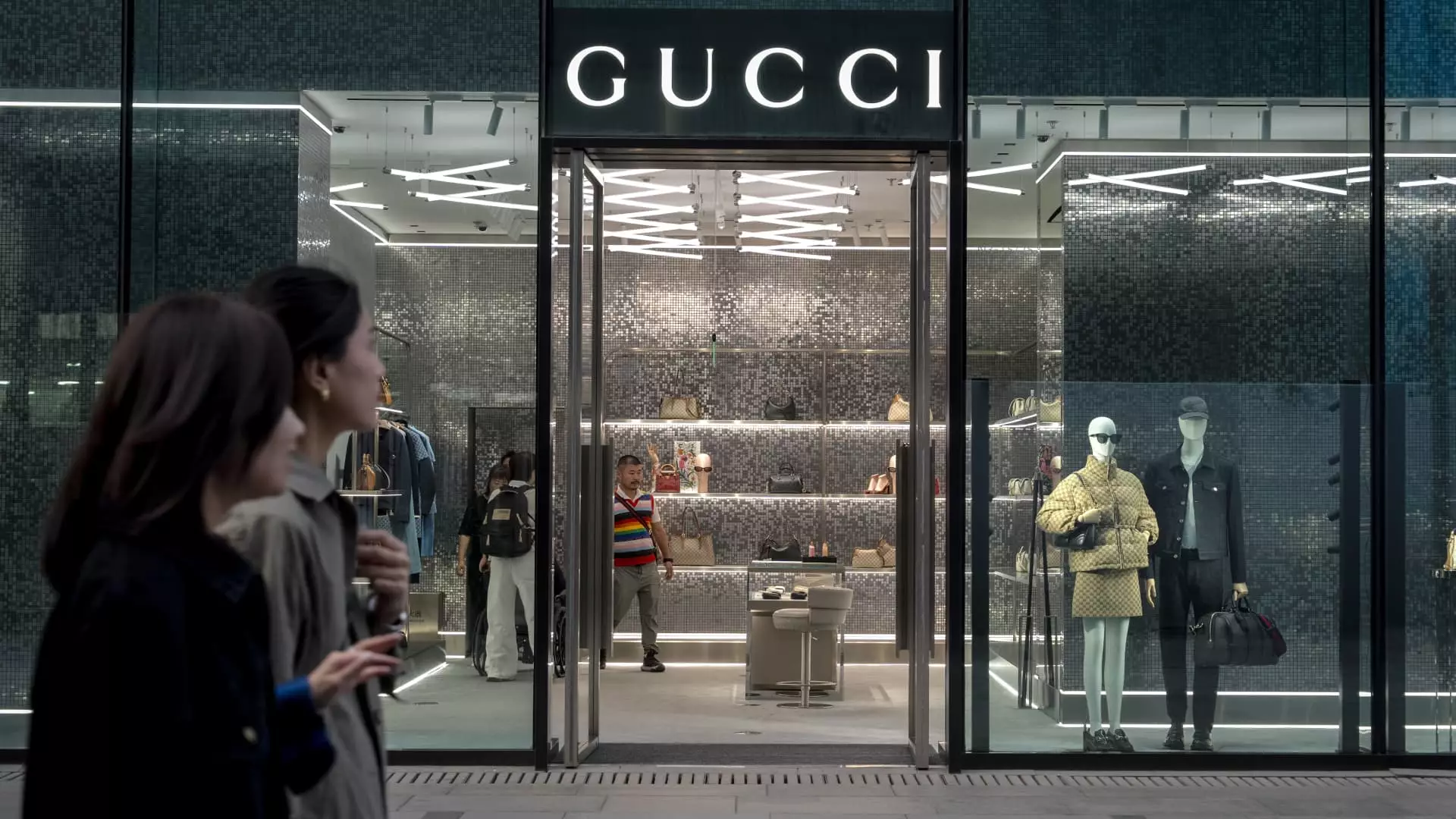On a recent Tuesday, Kering, the illustrious French luxury goods conglomerate, unveiled its fourth-quarter sales results, which, while surpassing some analyst projections, were uninspiring in comparison to previous years. This highlights a troubling narrative for the iconic group, whose portfolio includes illustrious labels such as Gucci, Bottega Veneta, Balenciaga, and Alexander McQueen. The reported quarter’s revenues plummeted by 12%, amounting to €4.39 billion ($4.52 billion) — a figure slightly above the anticipated €4.29 billion according to LSEG analysts.
More troubling was the double-digit decline in revenue pertaining to Gucci, which has long been the crown jewel of Kering’s offerings. Taking a staggering 24% hit over the same period last year, Gucci’s sales fell to €1.92 billion on a comparable basis. This decline underscores a persistent challenge the brand faces amidst fluctuating consumer preferences. As Gucci comprises nearly half of Kering’s total sales, the substantial dip raises critical questions about the brand’s future trajectory within the luxury market.
In context, Kering’s annual performance mirrored its fourth-quarter results, revealing a full-year decline of 12%, summing to €17.19 billion. This figure still edged out the projected expectations of €17.09 billion but was indicative of broader market trends that saw significant retraction in consumer spending. Operating income for the year reflected a rigorous 45% drop compared to the prior year, resting at €2.55 billion.
The initial reaction from the market was somewhat positive, with a 6% surge in Kering’s shares during early trading, a momentary reaction that quickly diminished to a modest increase of 0.5% by 10:15 a.m. London time. Chairman and CEO François-Henri Pinault seems optimistic, asserting that Kering is laying the groundwork for a stable recovery. His commitment to transforming the company’s several Houses to optimize brand desirability indicates a proactive approach amid evident vulnerabilities.
Regional Performance: Signs of Recovery?
Digging deeper into the geographical performance—Kering reported a slight uptick in sales across Asia Pacific and North America concerning brands like Gucci, Yves Saint Laurent, and Bottega Veneta. However, the company refrained from disclosing specific market stats, which raises concerns about transparency in their reporting. The crucial question persists: Has the luxury market definitively turned a corner?
Investors are looking for revitalization amidst waning consumer spending, particularly within the crucial Chinese market. The luxury sector has been a roller coaster, as evidenced by fluctuating earnings across competing brands. Recently, Kering joined the ranks of other European luxury groups in revealing less-than-stellar earnings, reflecting a unified atmosphere of uncertainty.
As part of its strategic response to these prevailing challenges, Kering announced the departure of Sabato De Sarno, the Gucci design chief who has served less than two years—a swift change indicative of Kering’s urgent need for a resurgence in fortunes. De Sarno’s departure raises eyebrows as he replaced Alessandro Michele, celebrated for his opulent designs that propelled Gucci to recent fame. The search for a new creative head will be closely monitored by stakeholders, who are analyzing how these leadership dynamics may affect brand positioning.
Industry observers like Simone Ragazzi, an analyst at Algebris Investments, perceive the potential for a brand reset under new design leadership. However, they caution that concerns remain, especially given Gucci’s recent history of volatility. The market’s cautious optimism is palpable; investors are both hopeful and skeptical—a sign of lasting implications of legacy issues while longing for renewal.
Despite a grim present characterized by disappointing figures, some analysts forecast a hopeful horizon. Luca Solca, a senior analyst at Bernstein, projected an optimistic outlook for Kering’s operating profits across its brand portfolio for 2024. However, he remains haunted by the shadow of Kering’s drastic downturn this year, coining it an “annus horribilis” for the luxury institution.
The path to recovery is lined with hurdles, as Kering grapples with high consumer expectations while emerging from a rough year. The upcoming appointment of a new design chief for Gucci will be pivotal—serving as both a gauge of Kering’s strategic direction and a reflection of its ability to adapt to the ever-changing luxury landscape. As Kering navigates through this transitional phase, the focus remains on the effectiveness of its strategies in rejuvenating a brand that has stumbled, and the implications such transformations will have for the broader luxury market.

